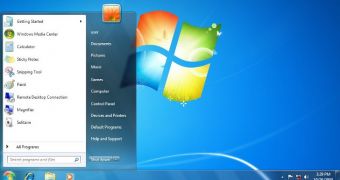Julie Larson-Green will be the new Chief Experience Office of the Applications and Services Group within Microsoft, even though she has until now had pretty important roles, including head of the Windows division.
In an interview with Re/code, Julie Larson-Green explains that her new job is actually a big challenge because it mixes all the previous projects she worked on, including Bing, Office, and Skype.
“It’s fun, it kind of brings together all of my past background, apps, Windows,” she says. “I’m excited, it should be fun.”
Larson-Green has also commented on Windows 8, the project that caused the departure of former Windows boss Steven Sinofsky and brought her at the helm of Microsoft’s number one unit.
Windows 8 was often criticized for the amount of changes it brought to the world, pretty much because it removed some traditional Windows features and focused very much on touch, but that switch had to be made, Larson-Green explains.
“Change is super hard. There’s definitely things I would think about doing differently to ease that transition. I think change was needed,” she says.
What’s more, Larson-Green adds that building just another Windows 7 wasn’t quite the best idea because both the company and its users needed to migrate to next-generation technologies and embrace touch as one of the main means of interacting with computers.
“I don’t know that building just another Windows 7 would have been helpful,” she points out.
Interestingly, Microsoft has often compared Windows 8 with Windows 7, saying that it’s just an improved version of its predecessor that comes with lots of enhancements, including the Metro UI. The Start screen, which has often been criticized for its touch-based behavior, was initially designed to fully replace the Start Menu on both desktop computers and tablets, Microsoft said.
Unfortunately for the Redmond-based tech giant, things haven’t worked out very well and many people actually turned to third-party software to restore the traditional Start Menu and enhance the usability of the desktop.
Microsoft indeed addressed some of the complaints in Windows 8.1, but the company still struggles to make its modern platform a little bit more appealing, so more changes are prepared for the future Windows updates.
The next product in Microsoft’s queue is the so-called Windows 8.1 Update 1 that will bring lots of desktop improvements, while Windows 9, the next full Windows release supposed to launch in early 2015, could even bring back the Start Menu and introduce options to launch Metro apps right on the desktop.

 14 DAY TRIAL //
14 DAY TRIAL //